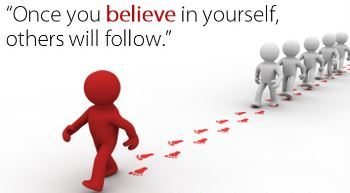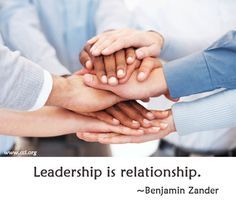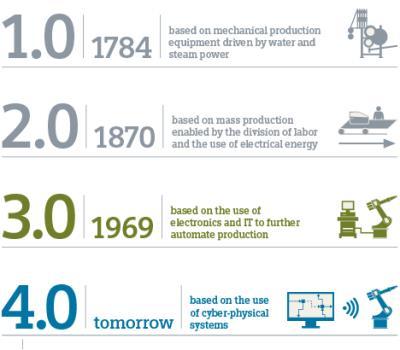Jeremie Averous's Blog, page 91
April 19, 2016
How Luxuries Tend to Become Necessities and Span Obligations
In the excellent book ‘Sapiens: A Brief History of Humankind‘, Yuval Noah Harari writes: “One of history’s few iron laws is that luxuries tend to become necessities and to spawn new obligations. Once people get used to a certain luxury, they take it for granted. Then they begin to count on it. Finally they reach a point where they can’t live without it.”
 Typical Contents of an American Home
Typical Contents of an American HomeIn the book he applies this law from the very start of the Agricultural Age to all sorts of new belongings and constraints imposed by the sedentary lifestyle linked to having fields to care for. But of course it is also widely applicable today to all sorts of modern life items, from cars to mobile phones. They were initially luxuries and have become things we can’t live without.
Today we can’t live without a number of contraptions that impose on us a tremendous burden in terms of maintenance and replacement. We can’t live without them because society also takes them for granted. For example, not having a mobile phone nowadays for professionals is something of an heresy!
It is at the same time the result of progress, and it comes also with obligations and constraints. The thing is to keep some balance so as to not become hostages to all those luxuries. How do you fare?

April 16, 2016
How the World Becomes More Addictive
In this post ‘The Acceleration of Addictiveness‘, Paul Graham makes the case that the world becomes increasingly addictive, because of technological innovation.
 “The world is more addictive than it was 40 years ago. And unless the forms of technological progress that produced these things are subject to different laws than technological progress in general, the world will get more addictive in the next 40 years than it did in the last 40.”
“The world is more addictive than it was 40 years ago. And unless the forms of technological progress that produced these things are subject to different laws than technological progress in general, the world will get more addictive in the next 40 years than it did in the last 40.”
Paul Graham then goes on to remark that it took about 100 years for society to develop antibodies and new customs to reject cigarettes. Thus, “unless the rate at which social antibodies evolve can increase to match the accelerating rate at which technological progress throws off new addictions, we’ll be increasingly unable to rely on customs to protect us.”
And seeing how people get addicted by their smartphone nowadays it is certainly a concern. People that abstain or are able to limit their consumption are becoming fewer apart, and we also have more difficulty concentrating on a task without interruption.
This however, will become an essential skill in the Collaborative Age and we probably need to educate ourselves and our children how to have safe havens and time spans without connectivity and computers.

April 14, 2016
What the True Cost of Happiness Is
I recommend the read of the post ‘The Hidden Cost of Happiness‘ by Mark Manson. It is not about ‘money can buy happiness’ but about the efforts we need to do to be truly happy.
 According to him, these are the five main ‘costs’ associated with true happiness:
According to him, these are the five main ‘costs’ associated with true happiness:
You must accept your imperfection and flaws,
You must take responsibility for your problems,
You must feel the fear and do it anyway,
You must find a deeper purpose for your actions,
You must be willing to fail and be embarrassed.
In this view, happiness would thus be based on self-awareness and action, taking full responsibility of what happens. What do you think?

April 12, 2016
How to Manage Self-Doubt When in a Leadership Position
Following up on our post on ‘How Leadership is a Relationship‘ on how you can’t be a leader without a relationship with others, one of the quotes from Barry Posner’s talk was that “Leadership begins with belief in yourself“.
 Now this made me think about the importance of self-confidence in leadership. There is an issue though – in my experience, it is difficult to reach a 100% self-confidence, but in any case at least a significant amount of self-confidence must be projected out to the team for leadership to work.
Now this made me think about the importance of self-confidence in leadership. There is an issue though – in my experience, it is difficult to reach a 100% self-confidence, but in any case at least a significant amount of self-confidence must be projected out to the team for leadership to work.
How can we manage self-doubt at the same time we need to project self-confidence? It might be one of hardest issues in leadership, in particular in situations where failure is quite possible (e.g. in a startup or during some experimental project).
Authenticity is, I believe, the solution. Authenticity with oneself (acknowledging one’s doubts), and authenticity with the team (acknowledging uncertainties). However it is always a difficult path to be sufficiently open while at the same time not be discouraging. The solutions lies in the quality of the personal relationship with the team, that can acknowledge difficulties.

April 9, 2016
How Leadership is a Relationship
In an interesting TEDx talk, Barry Posner explains very well how leadership involves nurturing a relationship to be effective. Even with the best vision and assurance the leader can’t do anything without a good relationship with others.
 “The first person that has to follow you is you“, but leadership is a relationship.
“The first person that has to follow you is you“, but leadership is a relationship.
The nature of this relationship is particular. As Barry Posner says, the most effective “leaders turn their followers into leaders“.
“Leadership is not a solo act, it is not a monolog, it is a dialog, it is a conversation“.
As Barry Posners sums it up, “you can make a difference – and you can’t make it alone“. Nurture the relationships.

April 7, 2016
How We Can Shape the Fourth Revolution
The big talk at Davos this year was about the Fourth Industrial Revolution. It is best explained in Klaus Schwab‘s post ‘The Fourth Industrial Revolution: what it means, how to respond‘. This Fourth Industrial Revolution is in fact quite close to our Fourth Revolution in its premises, although of course the perspective is slightly different. Still it brings some interesting thoughts about the transformation of the world.
 Industrial Revolutions
Industrial RevolutionsIn particular, Klaus Schwab states that “An underlying theme in my conversations with global CEOs and senior business executives is that the acceleration of innovation and the velocity of disruption are hard to comprehend or anticipate and that these drivers constitute a source of constant surprise, even for the best connected and most well informed.” Even the best informed at Davos are struggling to anticipate what will happen.
Klaus Schwab goes on to describe the social tensions that are arising, in particular in the field of inequality: “in the future, talent, more than capital, will represent the critical factor of production. This will give rise to a job market increasingly segregated into “low-skill/low-pay” and “high-skill/high-pay” segments, which in turn will lead to an increase in social tensions.” Governments struggle to adjust and respond, and there seem to be a number of different path humankind could take in the near future – some acceptable, others not.
Finally he concludes that it comes to us to define what is acceptable or not, based on humanistic values.
How much can we influence collectively the path that the Fourth Revolution is taking? Reactions from governments are always too slow compared to the evolution of services, and it will come down to all of us to find the right governance to make the Collaborative Age an Age where most of humankind can see progress and contentment. Yet it will be tough and there will be crisis. The best solutions remains to be found.

April 2, 2016
How We Now Have the Opportunity to Overcome the Limits of Averaging
The Fourth Revolution and the availability of data and data processing allows us to go one step beyond looking at averages. We can now observe data distributions and figure out finer conclusions than those based simply on averages.
 This seems only a small step, but right now our institutions and large companies still have not figured it out. It is is the same in projects – we only consider average performance. Average makes sense only when aggregating a large number of instances, but we lose so much information in doing so!
This seems only a small step, but right now our institutions and large companies still have not figured it out. It is is the same in projects – we only consider average performance. Average makes sense only when aggregating a large number of instances, but we lose so much information in doing so!
In particular we miss critical information on what is working better and where we can seek to learn what is the impediment to better performance. We miss information on the variability which is so important. Read Seth Godin’s post On average, averages are stupid to have a great illustration of this effect.
Let’s get beyond averages and take benefit of the wealth of available data to produce better informed decisions!

March 31, 2016
Why We Should Practice Nemawashi in Change Management
Nemawashi is an interesting lean management practice (part of the Toyota way), which means going around the decision-makers before a decision meeting to explain to them the foreseen change and prepare them for the decision.
 Basically it means convince the participants one by one, or at least expose them to the decision they have to make. At the extreme, the decision meeting itself becomes just stating an evident decision.
Basically it means convince the participants one by one, or at least expose them to the decision they have to make. At the extreme, the decision meeting itself becomes just stating an evident decision.
I very much like the image – wikipedia states: “Nemawashi literally translates as “going around the roots”, from ne (root) and mawasu (to go around [something]). Its original meaning was literal: digging around the roots of a tree, to prepare it for a transplant. This process involves bringing the dirt from the new location, and introducing it to the tree, before the transplant, so the tree can grow accustomed to the new environment before it gets there.”
So let’s us have a process before transplanting new idea. Nemawashi!

March 29, 2016
How Institutions Design Human Nature
In this interesting TED talk ‘The way we think about work is broken‘, Barry Schwartz describes how society and institutions shapes the way we think and we are – our human nature.
 The military, an institution that definitely influences human nature
The military, an institution that definitely influences human natureHe elaborates how the Industrial production system (Adam Smith) aimed at making us cogs in a system with limited initiative, and how this shaped human nature in the past decades. “It is only human nature to have a human nature that is very much the product of the society in which people live. That human nature, that is to say our human nature, is much more created than it is discovered. We design human nature by designing the institutions within which people live and work.” Barry Schwartz then calls for decision-makers to shape their organizations and institutions in a manner that would create a new type of human nature in the Collaborative Age.
What I find interesting in the concept is to consider how institutions do influence human nature. It is quite true in a way, as we tend to act and respond according to some learned patterns from institutions and organizations we served; probably with some limits I think. But then as institutions evolve or are replaced, human nature needs to fit in a new way of being in society. That is possibly the most challenging side of the Fourth Revolution – former human nature will become obsolete as new institutions will shape another new one. And which sides of human nature do we want to develop?

March 26, 2016
How to Make Hard Choices: Rely on What You Want to Be
Philosopher Ruth Chang’s TED talk on ‘How to Make Hard Choices‘ is quite an interesting insight into how we take tough decisions. According to Ruth Chang, we generally think we take the option that looks like the safest: “It’s a mistake to think that in hard choices, one alternative really is better than the other, but we’re too stupid to know which, and since we don’t know which, we might as well take the least risky option.”
There’s another way – I actually do have in my bag a dice to help me take tough decisions when I can’t decide.
 But in reality, Ruth shows that what we choose is actually what we want to be – and then after we rationalize to promote the option we prefer. “Instead of looking for reasons out there, we should be looking for reasons in here: Who am I to be?“. This is related to out unique capability to put our own selves into our decision, by projection of what we want to be.
But in reality, Ruth shows that what we choose is actually what we want to be – and then after we rationalize to promote the option we prefer. “Instead of looking for reasons out there, we should be looking for reasons in here: Who am I to be?“. This is related to out unique capability to put our own selves into our decision, by projection of what we want to be.
As Ruth concludes: “we become the authors of our own lives“. Not everyone does it, but that is a unique capability that allows us to tackle tough decisions in our lives.
Take 15 mins to listen to this interesting talk:




